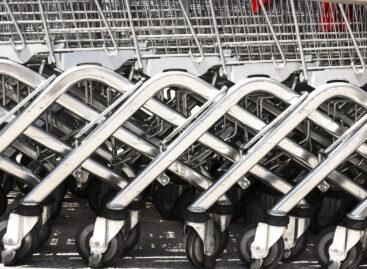Quick commerce booms in India as consumers seek faster deliveries
The demand is particularly high amongst younger consumers.

Quick commerce in India is rapidly transforming the retail industry, with growing demand for fast delivery of daily essentials, according to GlobalData.
The food takeaway segment is expected to grow at a compound annual growth rate (CAGR) of over 7.7% from 2023 to 2028.
Shravani Mali, consumer analyst at GlobalData, attributed the rise in quick commerce to the COVID-19 pandemic, which pushed consumers toward safer, more convenient shopping options.
“Quick commerce platforms are addressing this need by offering rapid delivery services that allow consumers to order groceries, household items, and ready-to-eat meals with ease,” he said.
Platforms like Blinkit, owned by Zomato, are capitalising on this shift, with its new Bistro app offering food delivery in just 10 minutes. Zomato reported a 55% year-on-year growth in gross order value (GOV) in Q3 2024.
“Online food delivery is a booming market in India with an ever-increasing base of consumers seeking inaccessible and personalized products delivered at home,” added Francis Gabriel Godad, business development manager, India at GlobalData.
The demand is particularly high amongst younger consumers, with 54% of Gen Z and 50% of Millennials in India spending more on food delivery, according to a recent GlobalData survey.
Quick commerce is also popular amongst working couples and mothers seeking time-saving solutions as India’s labor force participation rate in urban areas has risen from 47.6% in 2017-18 to 52% in 2023-24.
Godad said the sector’s growth is expected to create significant employment opportunities, especially for delivery and logistics workers. Additionally, partnerships with local retailers are helping businesses reach wider audiences.
“As the demand for instant delivery grows, companies that swiftly adapt through innovation, strategic collaborations, and improved service offerings are likely to succeed in this competitive environment,” said Mali.
Retail Asia
Related news
Billa Czechia Focuses On Quick Commerce
🎧 Hallgasd a cikket: Lejátszás Szünet Folytatás Leállítás Nyelv: Auto…
Read more >Could there be a turnaround?
🎧 Hallgasd a cikket: Lejátszás Szünet Folytatás Leállítás Nyelv: Auto…
Read more >Style, language and tools
🎧 Hallgasd a cikket: Lejátszás Szünet Folytatás Leállítás Nyelv: Auto…
Read more >Related news
Christmas shock in commerce: for the first time, we can pay with bank cards in fewer places
🎧 Hallgasd a cikket: Lejátszás Szünet Folytatás Leállítás Nyelv: Auto…
Read more >Hungarian Confectionery Manufacturers Association: trends in 2025 and prospects for 2026
🎧 Hallgasd a cikket: Lejátszás Szünet Folytatás Leállítás Nyelv: Auto…
Read more >Most grocery chains will be open until noon on December 24th
🎧 Hallgasd a cikket: Lejátszás Szünet Folytatás Leállítás Nyelv: Auto…
Read more >






